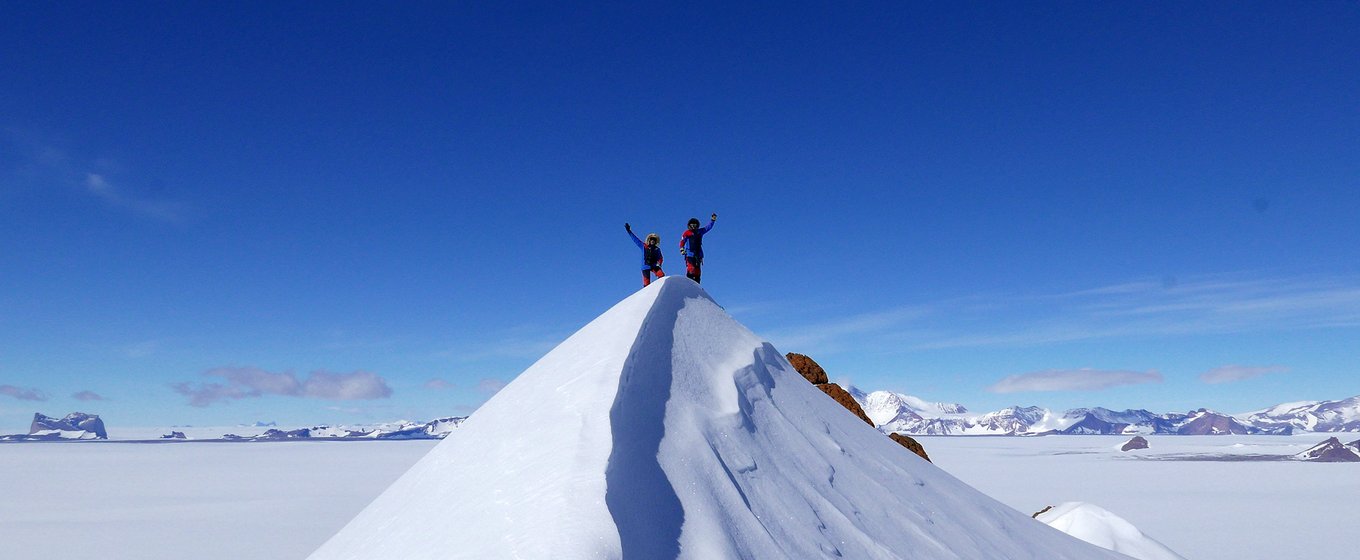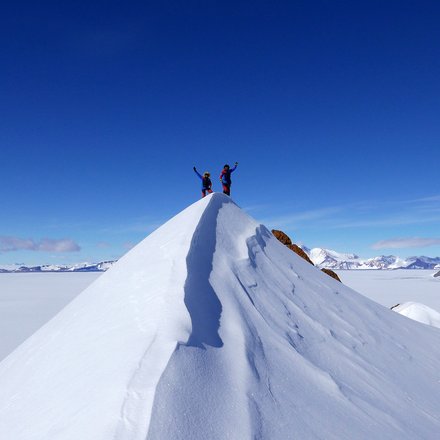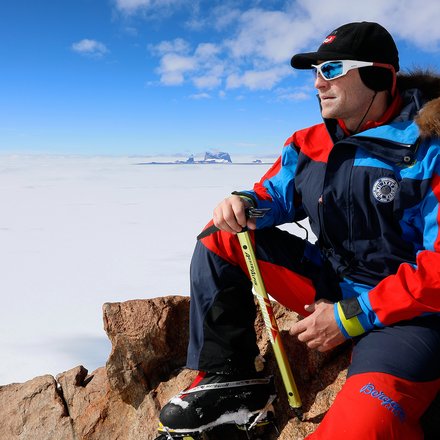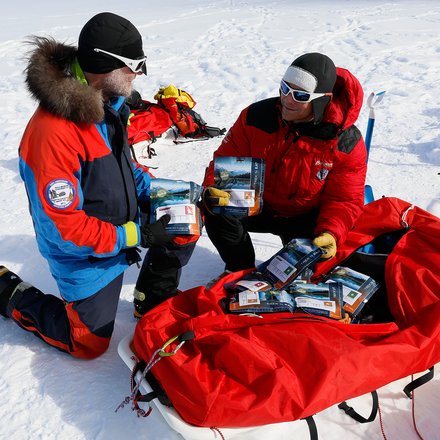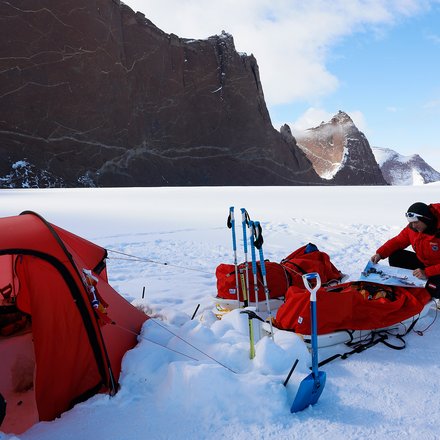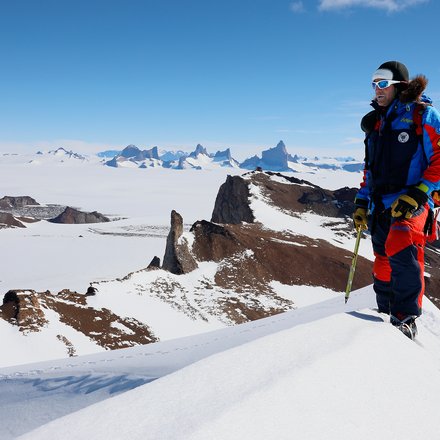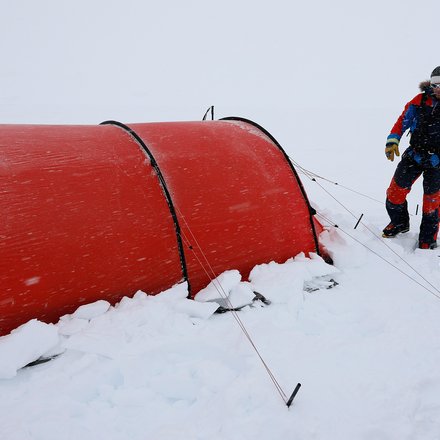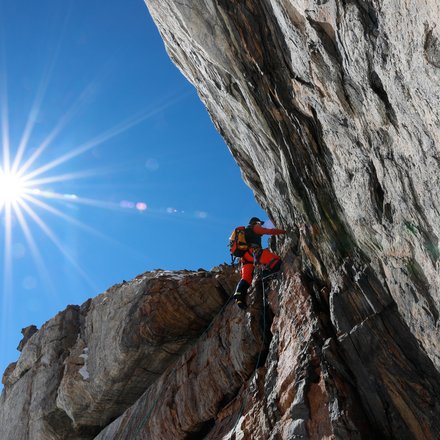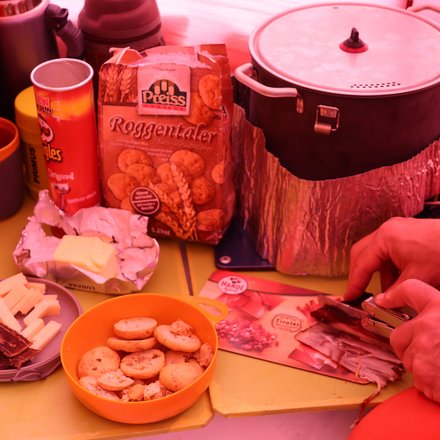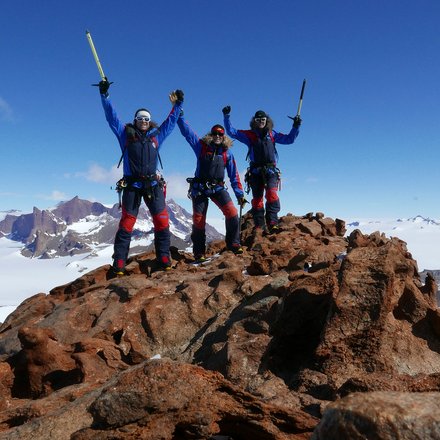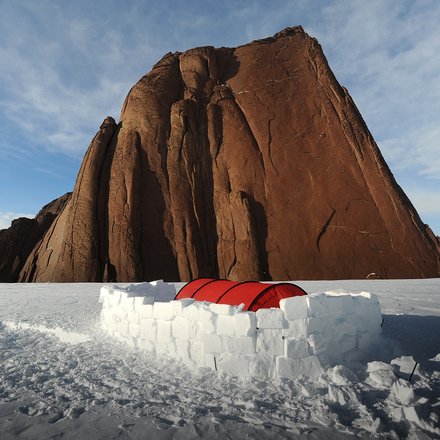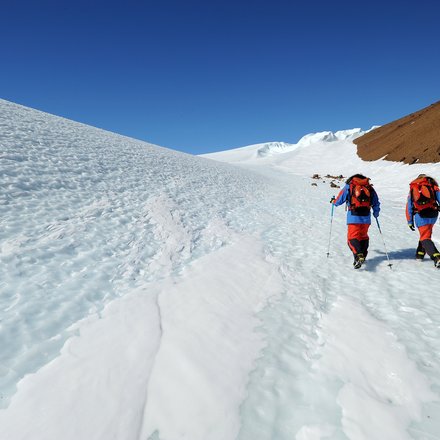Christoph, the first and most important question: Why Antarctica?
Antarctica is the continent of records: The most southern, remotest, most desert, snowiest, driest, coldest, windiest and most peaceful continent. For today’s mountaineers, the high mountains of Antarctica are comparable to the Himalaya in the 1960s and 1970s: There you will find high mountain ranges and massifs that no one has ever been to, not to speak of having explored it. Whoever exposes oneself to this area with skis, a sleigh and a tent, will be fully on his own in the biggest ice and snow wilderness of the planet. There you can discover new grounds, satisfy your curiosity and experience solitude.
The typical question, which is exciting in this case: What was the weather like? And what did you actually eat?
All in all, this year, the Antarctic summer was good to us and gladly, we were spared from a heavy katabatic storm. Katabatic storms are heavy downslope winds which occur without warning when icy cold, heavy air from the central Antarctic plateau flows down to the continental margins, where it is accelerated to over 100 km/h due to icy downward slopes and jet effects. We had wonderful Antarctic weather with relatively nice -15°C during the day, but bitterly cold -30°C at "night". We also experienced a white-out and even some centimeters of fresh new snow with the driest powder – an absolute rarity in central Antarctica. Our food consisted of dehydrated expedition food on the one hand, but also high-energy food such as Speck, Parmesan, dry bread, chocolate, nuts and dry fruits on the other hand.
How would you describe the are you traveled through and which summits did you climb?
Dronning Maud Land and its subregion Neuschwabenland are a real dream land. Here, gigantic rock towers break through the massive Antarctic ice shield like huge cathedrals or rockets. Many mountains have no name, most have never been climbed. We managed to circuit the northern Holtedahl mountains with our skis and polar sleighs and to climb 3 beautiful summits, two of them as the first humans ever. Because of their shape, we named them “Schneekrone” (“snow crown”), “Schneeglocke” (“snow bell”) and “Würfel turm” (“cube tower”).


